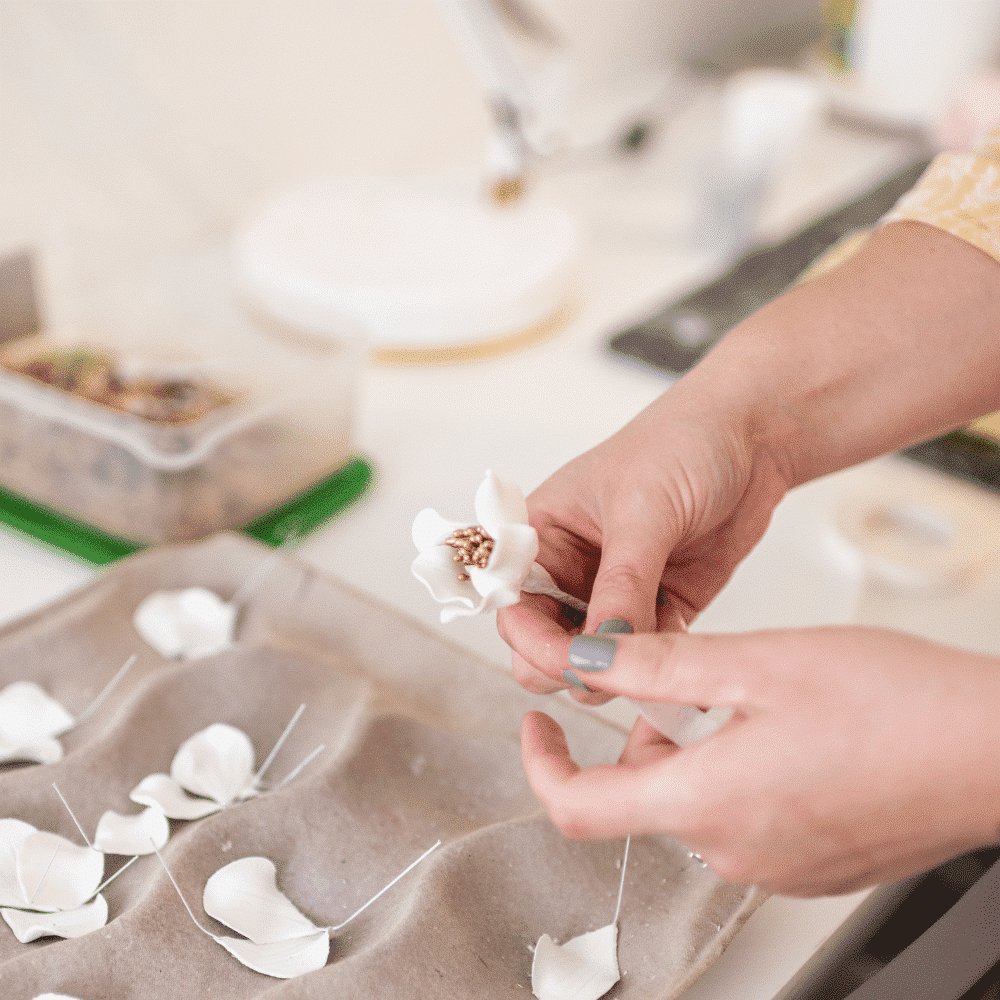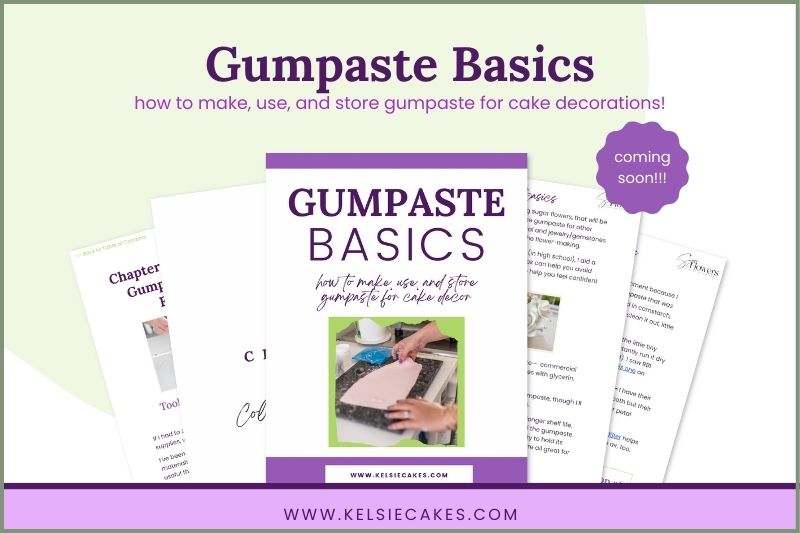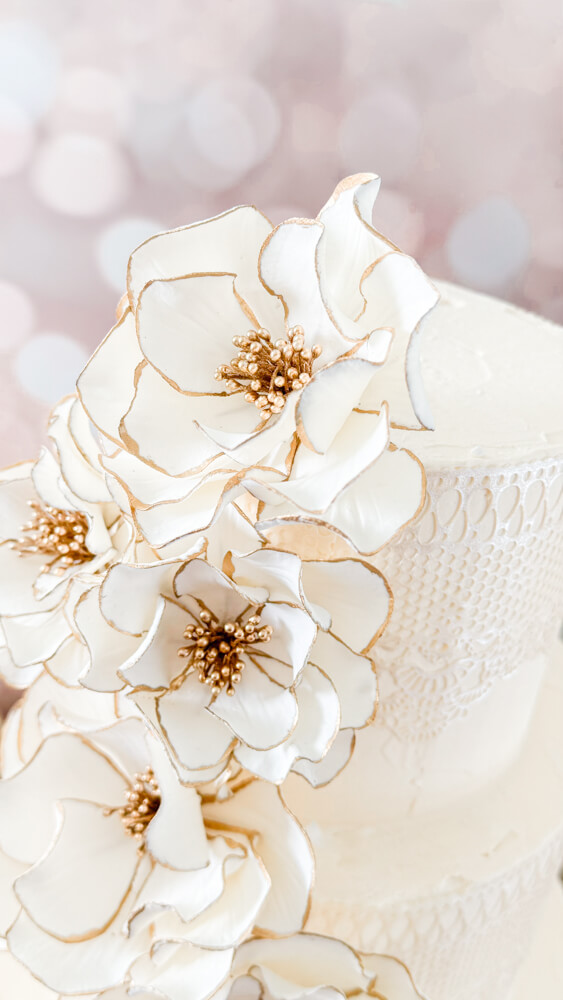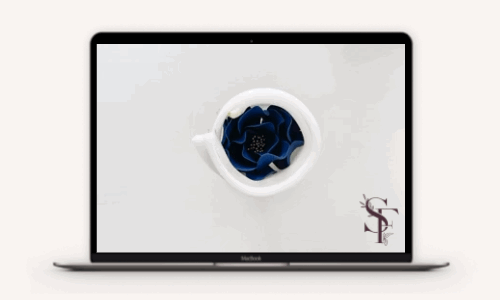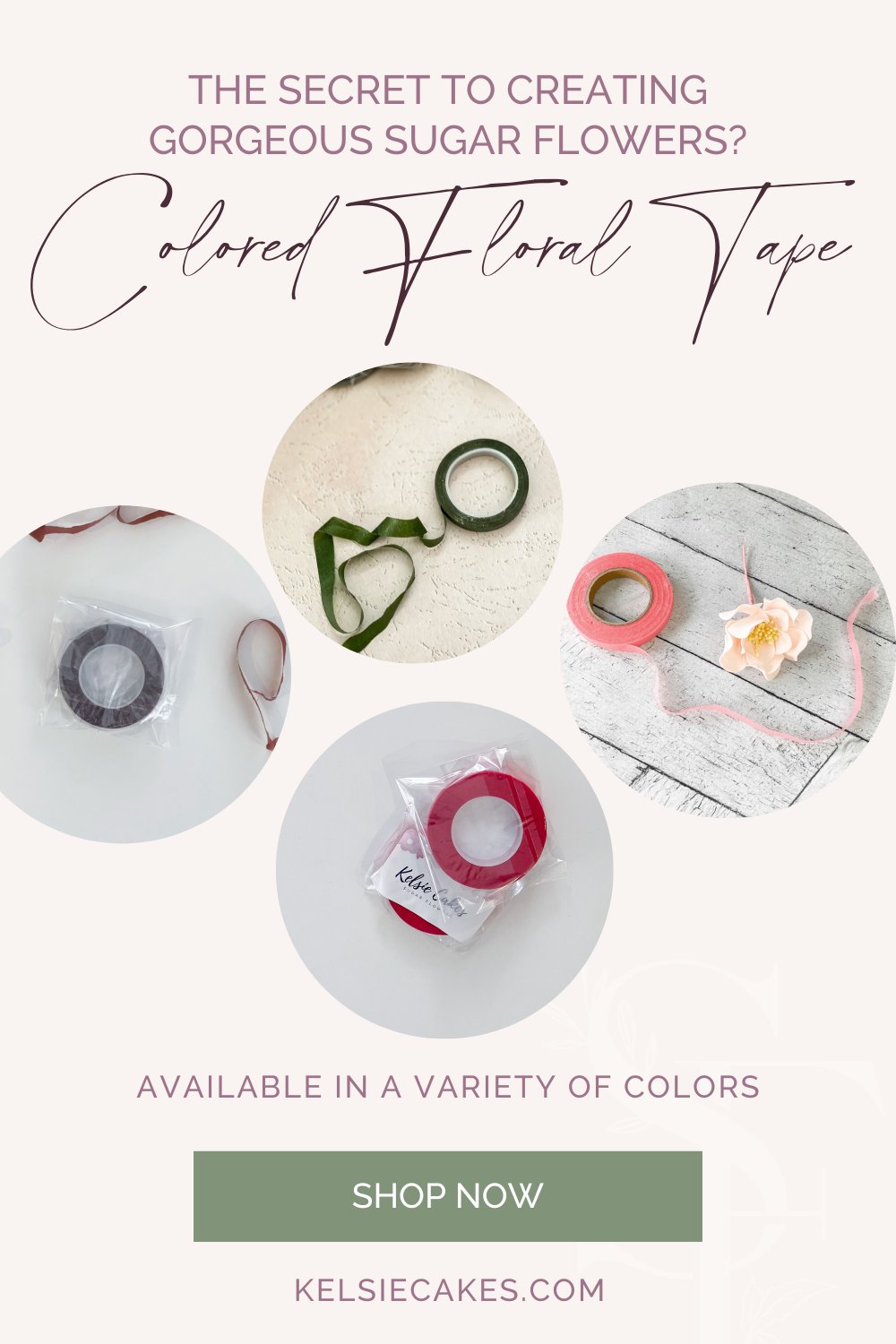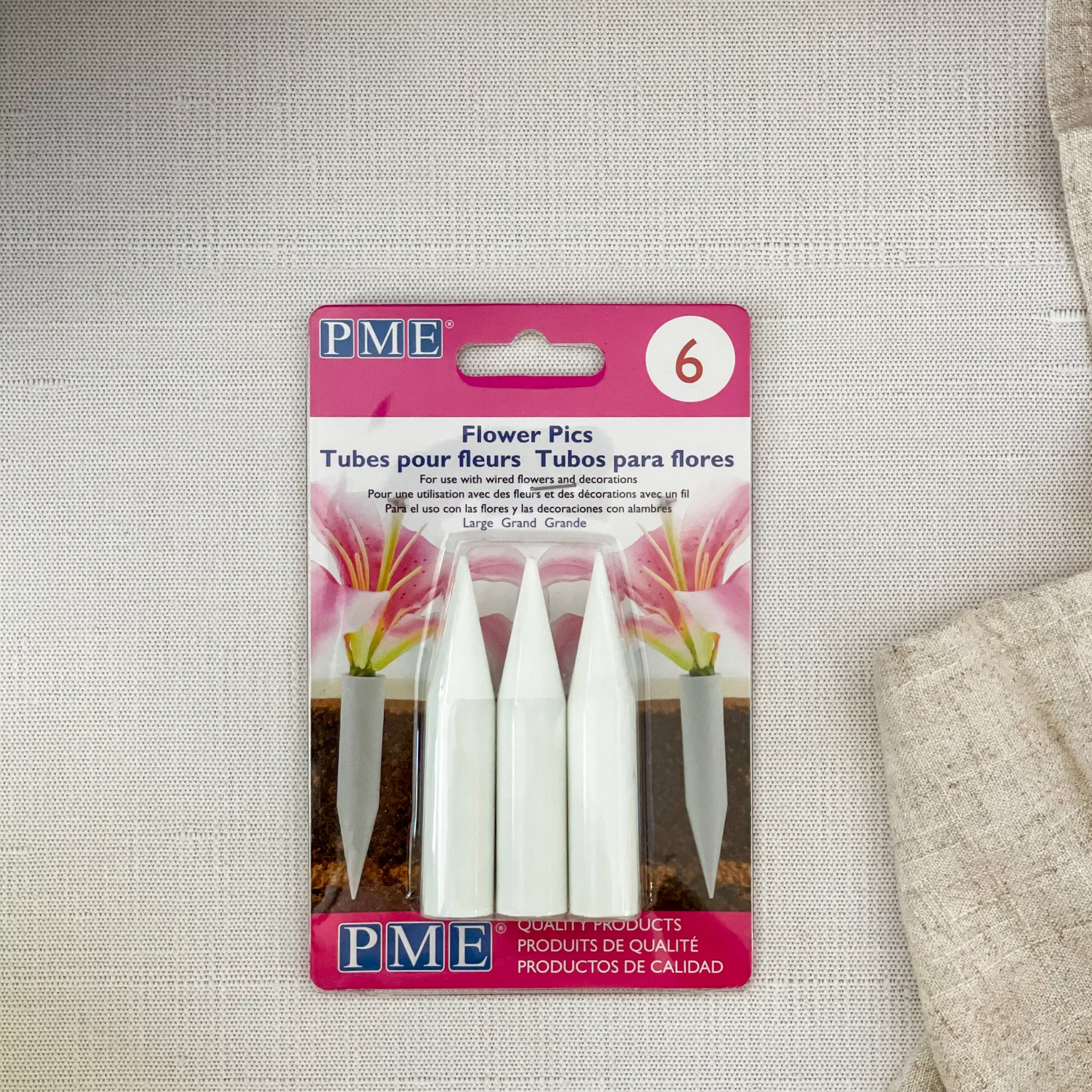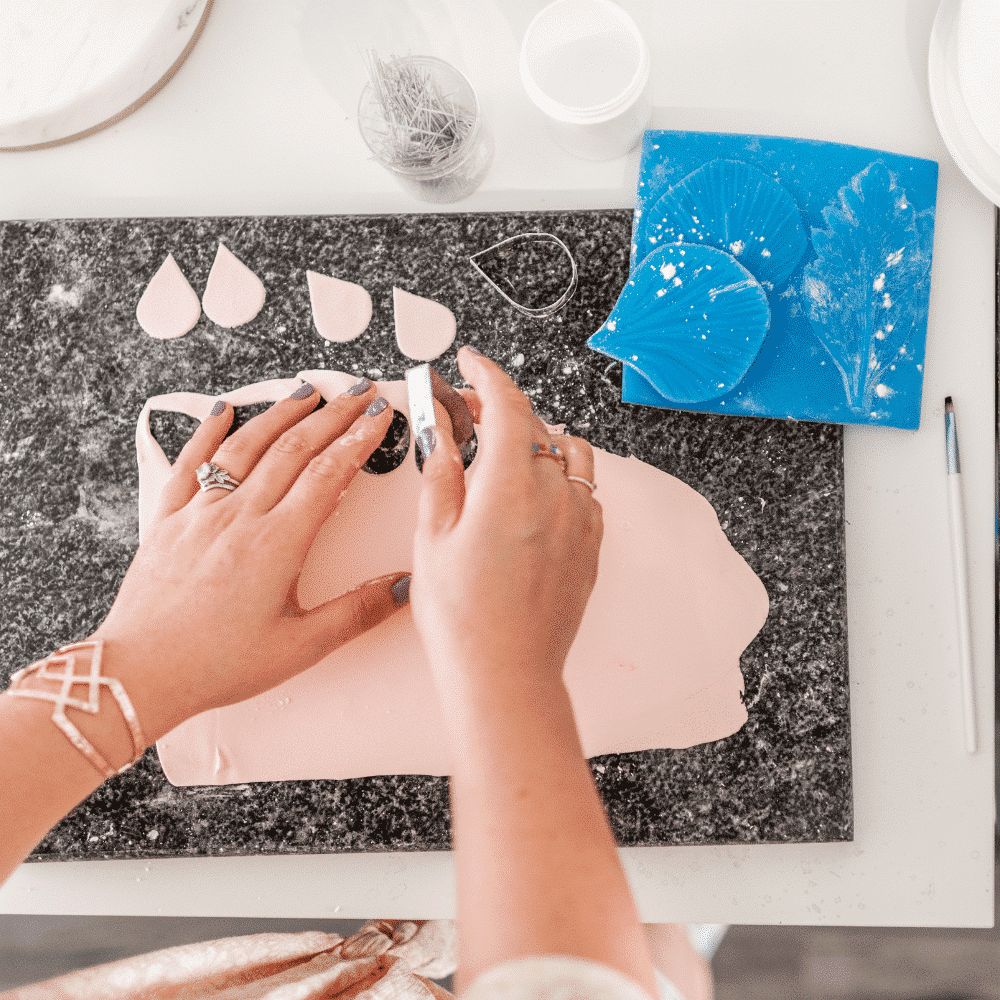Table of Contents
New to the world of cake decorating and sugar artistry?
I remember back when I first started, I had no idea what the difference between gumpaste and fondant was.
The cake terminology might sound complex, but I’m here to break down the Sugar Flower terms and definitions you’re most likely to come across when you’re learning how to make Sugar Flowers or shopping around to find the best, premade Sugar Flowers for your next edible masterpiece.
And yes, I totally include pictures!
Sugar Flower Terminology: The Basics
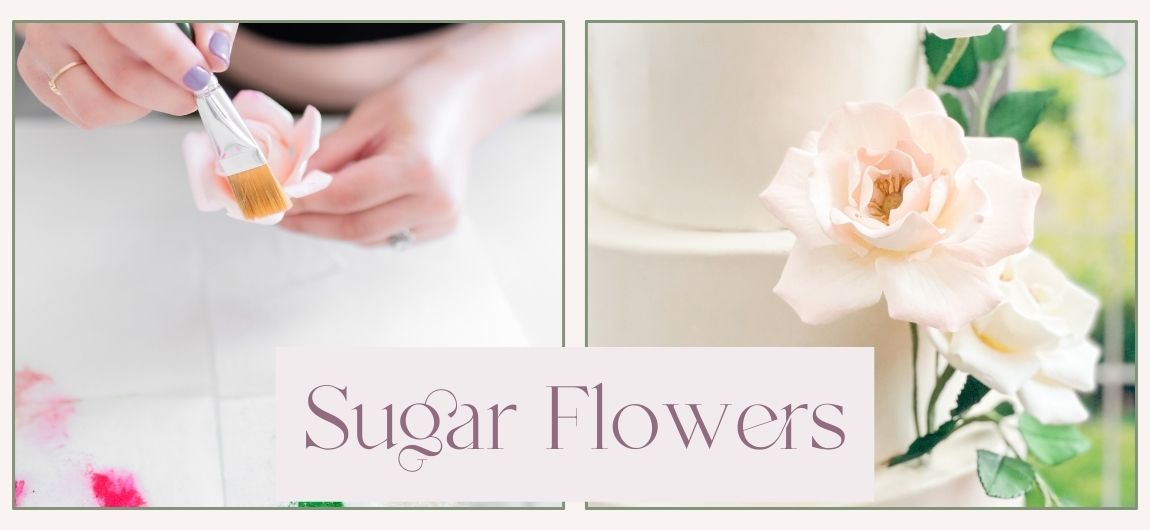
Sugar Flower
Sugar Flowers are a food-safe alternative to fresh flowers. They don’t wilt, they don’t attract bees, they don’t contain pollen or toxins (lookin’ at you, Lily of the Valley) or pesticides.
Sugar Flowers are made from a clay-like dough called gumpaste (also known as sugar paste in other parts of the world) and dry rock hard. If stored correctly (away from heat, humidity, and light) they can be stored for years.
Sugar Flowers can be made in any color and can look as real or as imaginary as a sugar artist’s creativity can make them.
Fondant
I like to describe fondant as like edible play-doh. You can create little sculptures with it but most commonly it is used in a very fine, thin layer over buttercream to decorate cakes and give them a smooth finish.
People usually feel very strongly about fondant, they either love it or hate it. I think the best of both worlds is to have a nice thick frosting of buttercream or ganache on your cake, which is then covered with a super-thin fondant layer.
I don’t like using fondant to make Sugar Flowers because it doesn’t dry as hard and can be more brittle when it’s dry (the moisture of the cake keeps the fondant covering from getting brittle, though)
Read this next! Comparing fondant, modeling chocolate, and gumpaste.
Gumpaste
My favorite medium to work with! Gumpaste is made from a few very simple ingredients: egg whites, sugar, tylose, and shortening.
Gumpaste is a clay-like consistency that starts to dry quickly. The gumpaste is rolled out thin to make the petals and then left to harden before assembling into flowers. Once gumpaste is dry, it contains no moisture and is shelf-stable. (Basically, you can store them forever)
| Interested in learning more about gumpaste?! I wrote a whole ebook! It’s still in editing mode but will be published in 2025. Want to preorder today? Click here to buy for only $9! |
Sugarpaste
Another word for gumpaste, used to make sugarpaste flowers
Pastillage
Another word for gumpaste, used to make pastillage flowers
Sugar Flower Terminology: Ingredients + Creation
Stamens
This is the center part of open flowers (roses and peonies for example)
If you want to get scientific about it, stamens are made out of an anther and filament. But for our purposes, stamens are the cloth/plastic centerpieces that the petals are wrapped around.
I often dip the stamens in a metallic color to make them look elegant and shiny.
Petal
Sugar Flower petals can either be wired (see: open roses, tulips, peonies) or they can all be attached together to one central stem (see: dahlias, ranunculus, lisianthus)
The flowers with wired petals are wrapped tightly in foam during shipping, so you can open them up to fluff up your flower and bring it to its maximum size. It’s also easy to remove a chipped or damaged petal.
For non-wired petals, like on a dahlia, everything is rigid and attached together with an edible glue that dries rock hard. If a petal breaks off of a dahlia, for example, you can dab some edible glue at the base of the petal and let it dry for 24 before using.
Read this next: How to fix a broken sugar flower petal
Floral Wire
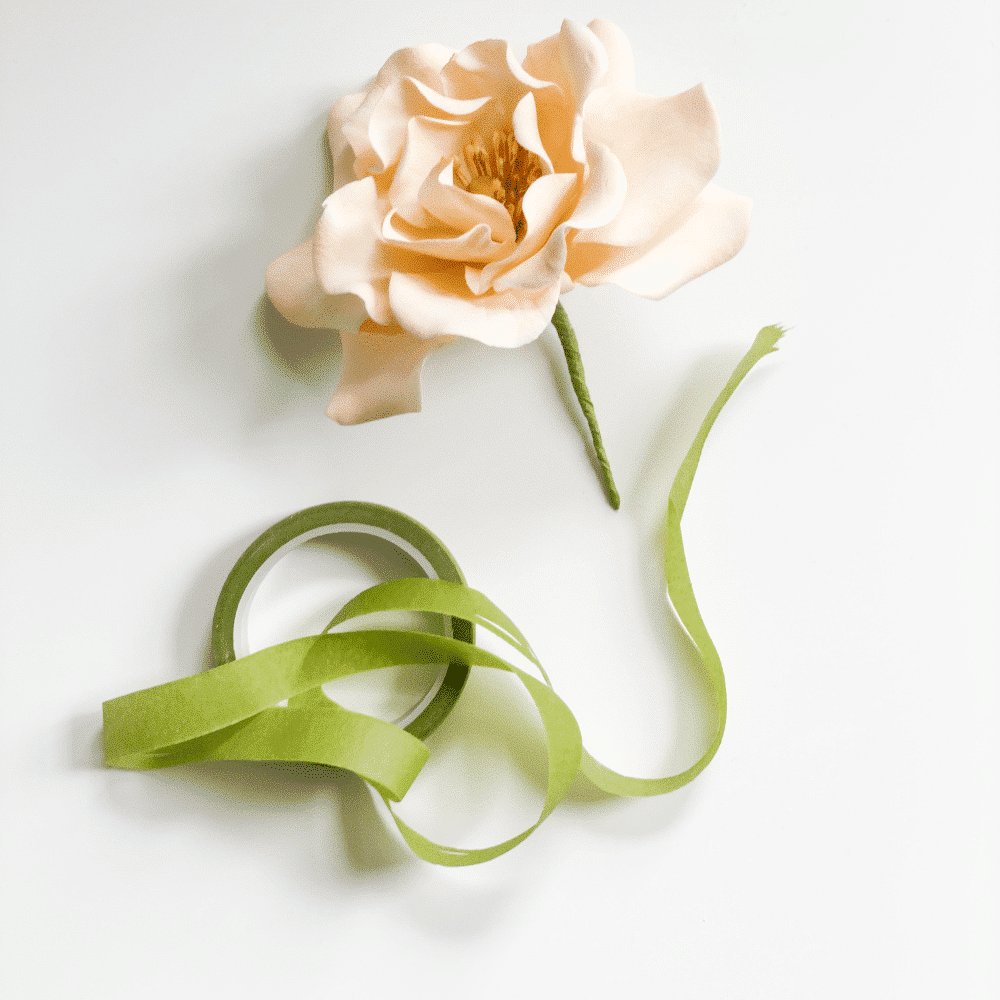
Thin, paper-covered wires that are inserted into petals and whole flowers to give them stability.
I use floral wire in all my flowers because this is the easiest and most secure way to anchor them to your cake.
Read this next: How to create a realistic-looking daffodil stem!
Floral Tape
Floral tape gets sticky when you stretch it out, so you can wrap it around floral wires and they will all come together to form the central stem of a flower or branch.
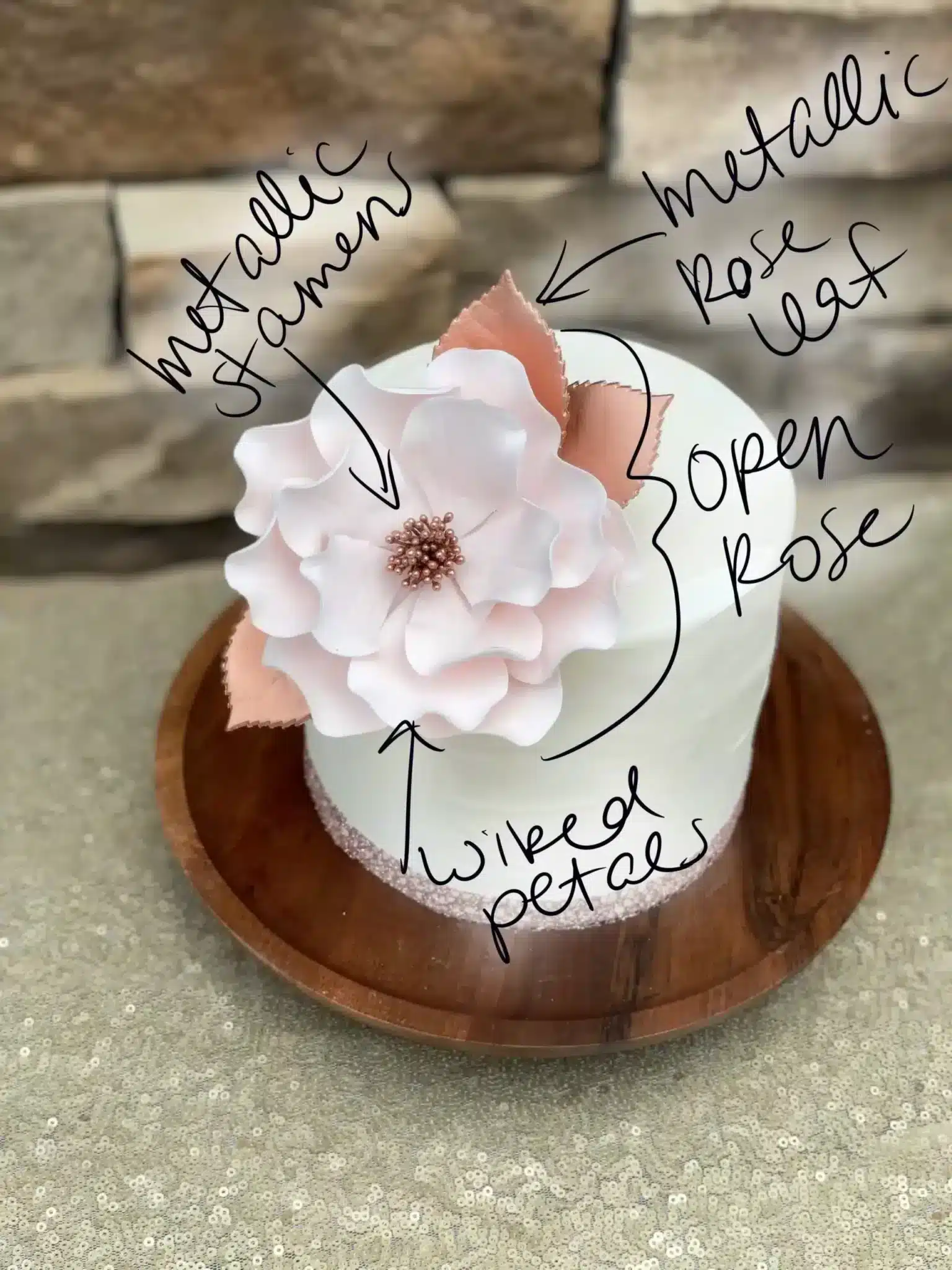
Metallic Highlighter
I use a nontoxic metallic highlighter for coloring stamens and adding gold or silver details to Sugar Flowers.
It is not edible but is safe to use as a cake decoration.
Always make sure you remove Sugar Flowers from your cake before serving.
Food Coloring
I used edible powders and gels to add color to the gumpaste or to paint/dust color on top of the dried flowers.
One of my favorite food color brands is Roxy & Rich because their colors are so vibrant and concentrated. Here’s a little more info about food coloring from their website:
Yes. All of our food colouring products are edible. We do not produce nontoxic (inedible) colouring products. However, while some colouring products are considered edible in some countries, they may not meet food safety standards established in other countries. All of our products feature labels that clearly state compliance or non-compliance with Canadian, American or European standards.
United States: All of our colouring products are edible and comply with FDA food safety standards, EXCEPT: 1) the Highlighter collection which meets Canadian and European food safety standards only; 2) colours T2-091 to T2-115 from the Hybrid Petal Dust collection which were developed for the Canadian market and meet Health Canada food safety standards only. Labels on these colours warn customers from the United States to use for decorative purposes only.
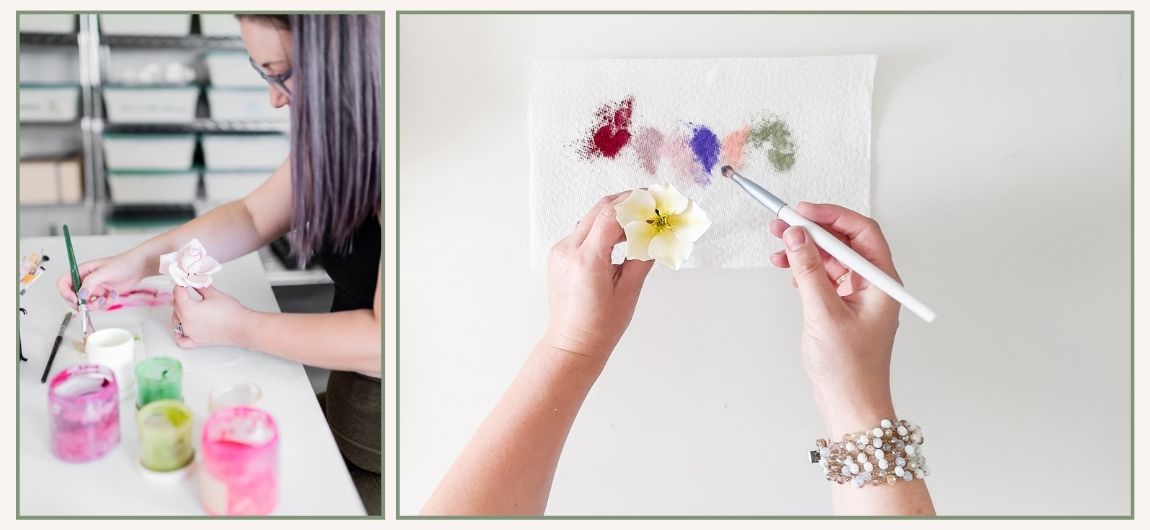
Read this next: How I make burgundy red gumpaste from scratch!
Tylose
The magic ingredient in gumpaste is tylose, which is a powdered thickener that makes the gumpaste, well… a paste. It’s sometimes called CMC powder, and it has other culinary uses like as a thickener in ice cream.
Edible Glue
This is a mixture of water and tylose powder that forms a very sticky glue-like substance that is ideal for attaching petals together. It dries mostly clear.
I make my edible glue from scratch but you can also buy it premade.
Confectionery glaze
This is an edible glaze that is often used to coat chocolate and candies to make them shiny. I use them to set colors so they don’t rub off of the flowers, and to make leaves look glossier. It is VERY sticky stuff. I like the aerosol version but it gets very messy. I also use a diluted liquid version.
Sugar Flower Terminology: Prepping + Pre-decorating
Safety Seal
This is an FDA-approved food-safe wax for dipping your flower stems into. Once it hardens, you can stick your flowers directly into your cake and it is a barrier between the flower and the cake.
As far as I know (in 2024), Safety Seal has been discontinued by the manufacturer, and there aren’t any alternatives on the market right now. 😔
Flower pics / posy pics
These are little plastic tubes with the bottom closed off, often with a pointy end for easily sticking them into your cake. You stick the pic into the cake, then stick the floral wire into the pic. This creates a barrier between the flower and the cake.
Color matching
All of the Sugar Flowers made by Kelsie Cakes are made by hand in small batches, so some differences in color may occur. Plus, all phone, computer, and tablet screens can be different, especially in different environments, so the colors won’t look the same in person as they do on the computer screen.

Because my sugar flowers are handmade items, the white flowers aren’t a true almost-blue commercial white but a creamier, warmer off-white. The blush flowers are also on the warmer and peachier side of the spectrum.
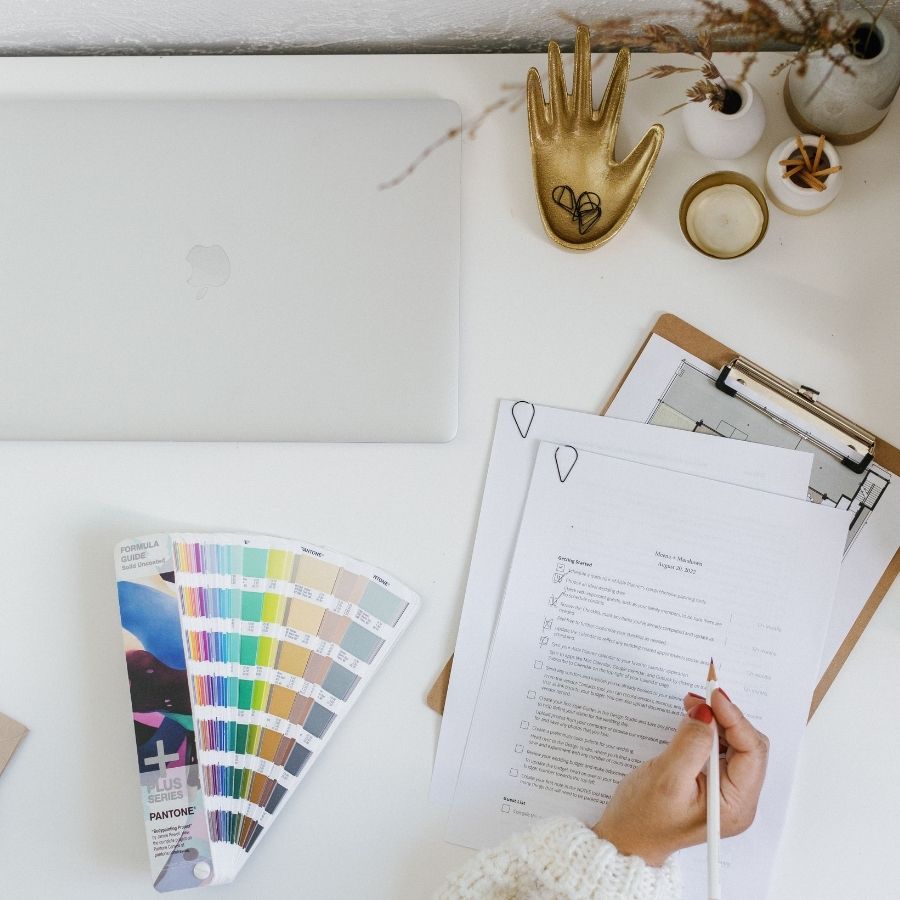
Room temperature
I keep my studio between 67-77° F. I live in Florida so it gets pretty hot during the summer. In the winter, it almost never gets cold enough for the temperature to drop below 67°.
This is my ideal range for keeping the Sugar Flowers from melting in the heat or getting too brittle in the cold.
Sugar Flower Terminology: Decorating + Styling
Bundle
Kelsie Cakes will mix and match different flowers for popular design combinations. I call them Bundles and they make it quick and easy to select the flowers you need for your cake. Not sure what size you need?
Read this next: New semi-custom arrangements now in the shop!
Arrangement
The Sugar Flowers I make at Kelsie Cakes are always made individually so that they can be safely packaged and shipped to you. You have the greatest flexibility in putting your Sugar Flowers on your cake this way as well. When I am designing a custom order for you, I refer to your order as an arrangement since the flowers will be…well, arranged on your cake!
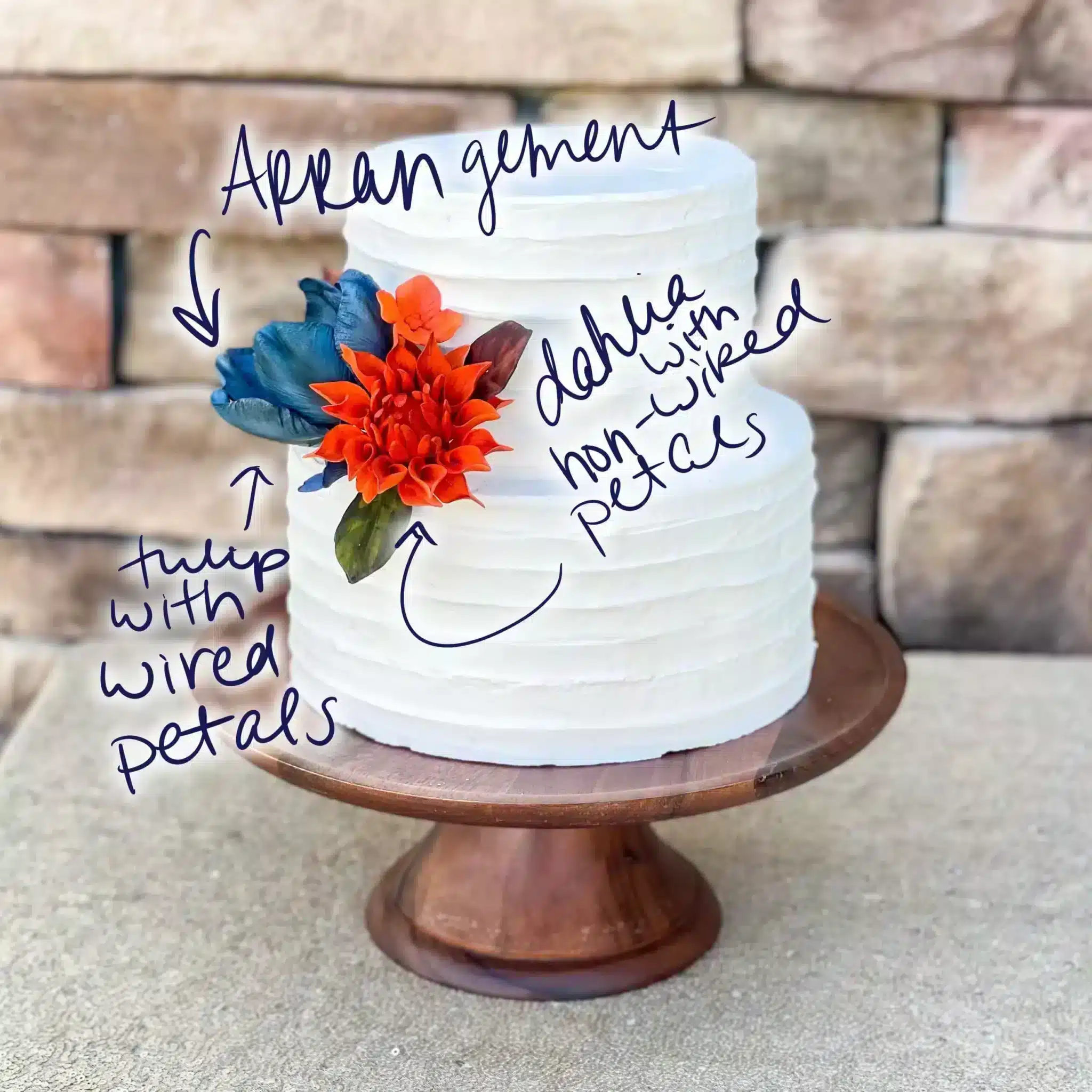
Spray
This is a floral wire stem with a mix of Sugar Flowers and/or leaves that are all taped together (with floral tape) into a branch-like arrangement. I don’t typically sell Sugar Flower sprays because I prefer to have you decorate the cake however you see fit, instead of making you do it my way.
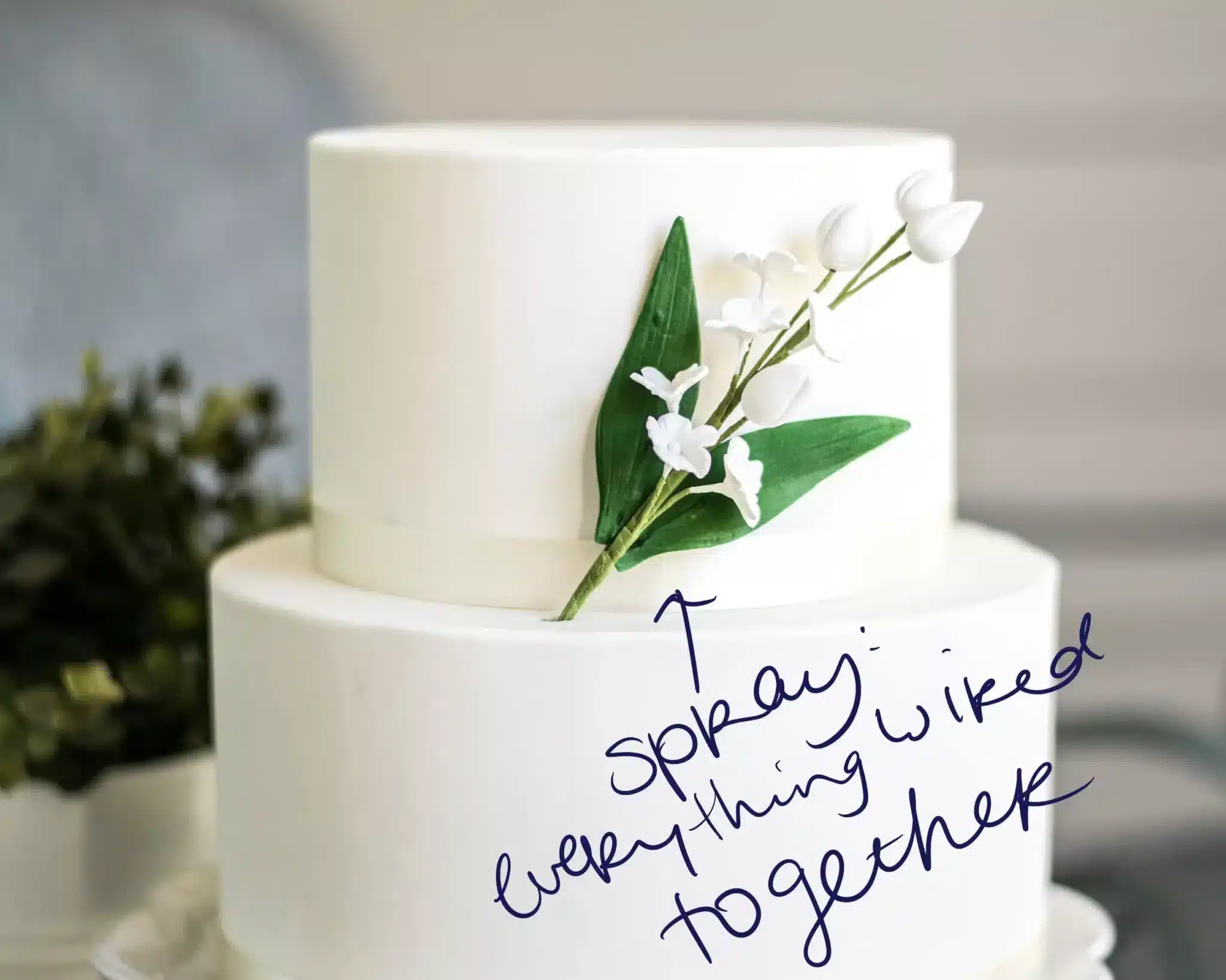
Sugar Flower Terminology: Bonus Definitions
Open Rose
The open rose is by far my most popular and bestselling sugar flower! It is more of a fantasy design than a botanically correct open rose, although it is absolutely inspired by nature.
For a more natural-looking open rose, see my heirloom roses.
I started making open roses back in 2016 in the early days of my shop, and they are so fun to combine different colors and sizes.
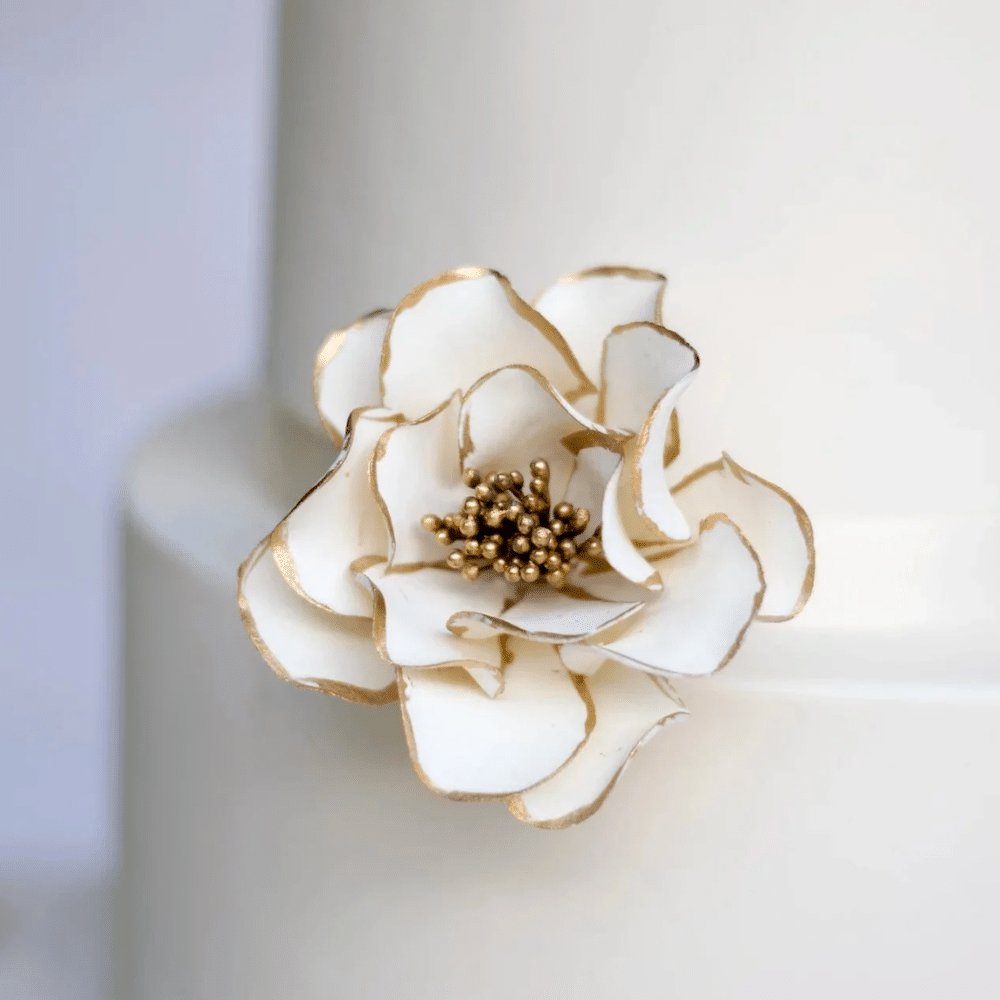
Kelsie Cakes
(Okay not specifically Sugar Flower terminology, but perhaps useful to know nonetheless!)
I know the name is a bit of a misnomer… I’m Kelsie but I don’t make cakes (anymore). I’d be happy to refer you to friends who make amazing cakes and desserts but my focus now is Sugar Flowers.
→ Check out this blog post where I share some of my favorite bakeries local to Tampa, FL!
Where did the name come from? My cousin’s daughter started calling me Kelsie Cakes when she was a toddler and I thought it was super cute. That’s what I named my original OG Blogger blog back when I was in high school (it started off as Cakes by Kelsie, but that didn’t have the same ring to it) and Kelsie Cakes has stuck with me ever since.
